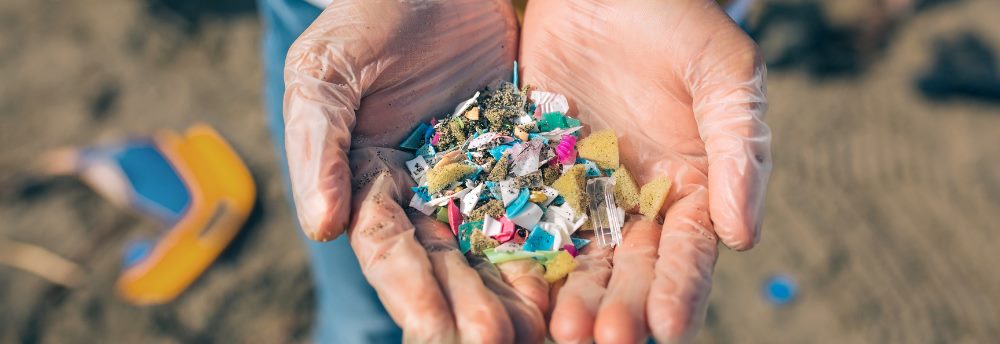Safeguarding Soil Health: The Crucial Role of Laboratory Professionals in Addressing Microplastic Pollution in the MENA Region

Soil quality analysis and management are pivotal in ensuring sustainable agriculture and food security. Recent concerns have emerged regarding the infiltration of microplastics into soil ecosystems, posing potential risks to soil health and crop productivity. A study published in March in the journal Proceedings of the National Academy of Sciencesm(PNAS), and highlighted by Greenpeace MENA emphasizes the urgency of addressing plastic pollution, which threatens global food security.
The study titled ‘Microplastic Pollution Threatens Global Food Security: Study’ has revealed that microplastic pollution significantly impairs photosynthesis across various ecosystems, posing a substantial threat to global food security. Conducted by researchers from the Chinese Academy of Sciences and Nanjing University, the study analyzed 3,286 observations from 157 studies, employing meta-analysis and machine learning techniques to assess the impact of microplastics on photosynthetic efficiency.
The findings indicate that microplastics reduce photosynthesis by 7.05% to 12.12% in terrestrial plants, marine algae, and freshwater algae. This decline correlates with estimated annual global losses of 4.11% to 13.52% in key staple crops such as rice, wheat, and maize, amounting to 109.73 to 360.87 million metric tons per year. In aquatic ecosystems, disruptions in photosynthesis are projected to reduce net primary productivity by 0.31% to 7.24%, leading to seafood production declines of 1.05 to 24.33 million metric tons annually.
The cascading consequences, the study states, “include not only increased food insecurity, but also imbalances in predator–prey relationships and overall ecosystem instability. These could threaten global food security and the health of ecosystems already under immense pressure”.
Bottom line: microplastics accumulating in soil, negatively impacts on photosynthesis of terrestrial plants, marine algae, and freshwater algae. As a result, global crop yields could decline by 4% to 14%.This threatens global food production and places up to 400 million additional people at risk of hunger in the next two decades.
These findings underscore the urgent need to address microplastic pollution as a critical factor affecting global primary productivity and food security. The researchers advocate for integrating plastic pollution mitigation strategies into broader sustainability and food security initiatives, emphasizing the importance of international cooperation and policy development to combat this emerging threat.
Laboratory professionals are at the forefront of detecting and quantifying microplastic contamination in soils. Advanced analytical techniques, including Fourier-transform infrared spectroscopy (FTIR) and pyrolysis-gas chromatography-mass spectrometry (Py-GC/MS), are employed to identify and characterize microplastic particles. Accurate assessment of microplastic levels is essential for understanding their distribution, sources, and potential impacts on soil health.
What are the MENA Laboratories' Initiatives in Soil Quality Management?
In response to the growing concern of microplastic pollution, laboratories across the Middle East and North Africa (MENA) region have initiated several measures to assess and manage soil quality:
- Adoption of Advanced Detection Methods: MENA laboratories are increasingly utilizing fluorescence microscopy with Nile red staining, a technique that offers rapid and efficient detection of microplastics in soil samples. This method enhances the accuracy of microplastic quantification, aiding in comprehensive soil assessments.
- Monitoring Microplastic Transport Pathways: Research institutions in the region are conducting studies to understand the transport mechanisms of microplastics across different environmental matrices. By mapping the distribution of microplastics in soils, sediments, and water bodies, these studies provide insights into contamination sources and inform mitigation strategies.
- Assessment of Agricultural Practices: Laboratories are evaluating the impact of agricultural practices, such as the use of plastic mulches and treated wastewater, on soil microplastic levels. Findings indicate that these practices contribute significantly to microplastic accumulation in soils, prompting recommendations for alternative methods and materials.
- Development of Remediation Strategies: Efforts are underway to explore soil remediation techniques, including the use of biochar amendments and bioremediation approaches, to mitigate microplastic contamination. These strategies aim to restore soil health and maintain agricultural productivity.
Management and Mitigation Strategies
Addressing microplastic pollution in soils requires a multifaceted approach:
- Monitoring and Assessment: Regular soil testing for microplastics can help in early detection and inform management decisions.
- Best Agricultural Practices: Encouraging the use of biodegradable mulches and reducing plastic inputs in farming can minimize contamination.
- Policy and Regulation: Implementing guidelines for plastic use in agriculture and promoting sustainable waste management can reduce the introduction of microplastics into the environment.
Conclusion
The infiltration of microplastics into soil ecosystems is an emerging concern that necessitates immediate attention. Laboratory professionals play a critical role in identifying and quantifying this contamination, providing the data needed to inform mitigation strategies. Collaborative efforts between scientists, policymakers, and the agricultural community are essential to safeguard soil health and ensure food security in the face of this growing challenge.
GET INVOLVED

